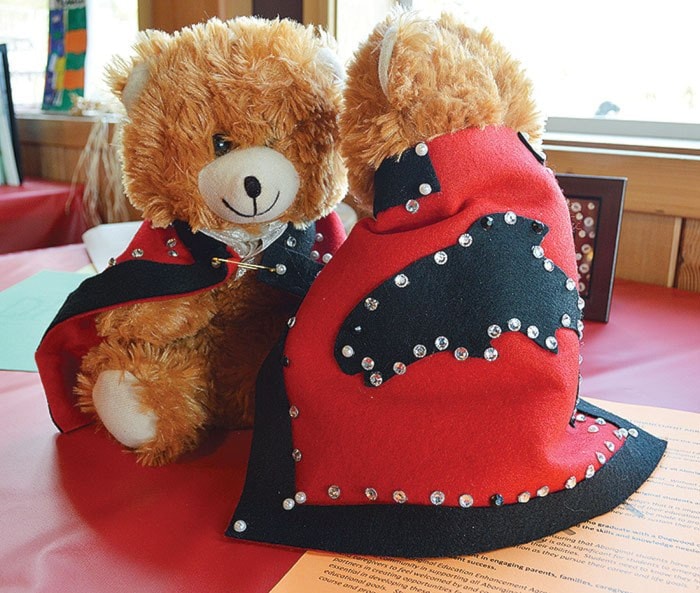On paper, the highly educated administrators and teachers of aboriginal students have written key words like: rationale, evidence, identity and achievement.
Important words, but they say far less in contrast to what the kids have put down on paper and created: Drawings of aboriginal spirits, memories from first grade, positive thoughts about school, along with handmade drums, paddles, masks and button blankets.
These things speak of pride in self, culture and community, and that makes the educators’ words entirely meaningful.
“Children are at the centre of all we do,” says Greg Johnson, principal of aboriginal education for the Campbell River school district.
It’s Wednesday and Rotary Hall at the Maritime Heritage Centre is decorated with the children’s art and their writings. It’s on display so the educators can see the “fruits” of their efforts to continually improve opportunities for aboriginal students to succeed in the classroom and in life.
“This community, though, is on the right path I believe,” says keynote speaker Ray Wilson.
Representatives from the school district and the local Aboriginal Education Advisory Council – including representatives from local bands – are meeting to work out details of the Fourth Aboriginal Education Enhancement Agreement. It’s significant because no other school district in the province is on its fourth agreement.
“We’re very proud of that. This group works very well together,” says Michele Babchuk, chair of the board for School District 72.
Several others echoed her comments and are also proud of the fact this school district is taking a leading role in advancing education for First Nations students.
It also couldn’t be more timely.
On Thursday, the Assembly of First Nations released the document “A framework to achieve success in First Nations education” which reads in part: “Canada and First Nations have expressed and advanced the priority of nurturing, enabling and supporting the success of all First Nation children through quality, culturally relevant education. Canada must agree that this can only be achieved through fundamental change starting with the recognition and implementation of First Nations control of First Nations education.”
That’s a national agenda, but here in B.C., the Ministry of Education is advocating a co-operative effort. The Campbell River council is leading the way, but the members aren’t content to rest on their laurels.
“We have great teachers, councillors, education assistants, administrators, support workers and even tutors that are available for First Nations students,” says Wilson. “All of these resources aren’t even being used to their full potential. We need to start raising our expectations for our children!”
Wilson should know. He’s a member of the Lekwiltok Nation, grew up on the Cape Mudge reserve on Quadra Island, went to school in Campbell River, starred on the B.C. champion Carihi basketball team, and then returned to Carihi as a teacher.
He acknowledges the success of the aboriginal enhancement agreements, but says more needs to be done.
“Far too many times I still see our kids lost and wandering the halls, with no connection to school or culture. I want our kids to not only come to school, but to be excited to be in school,” he says.
Since the enhancement agreements began, there have been significant improvements in literacy and numeracy skills for aboriginal students in Kindergarten to Grade 12. Just as important, says Wilson, First Nations students and their parents are embracing their heritage and traditions.
“We need to get away from the notion that aboriginal students must leave their culture at the door and adopt Western approaches to education and curriculum to succeed,” he says.
